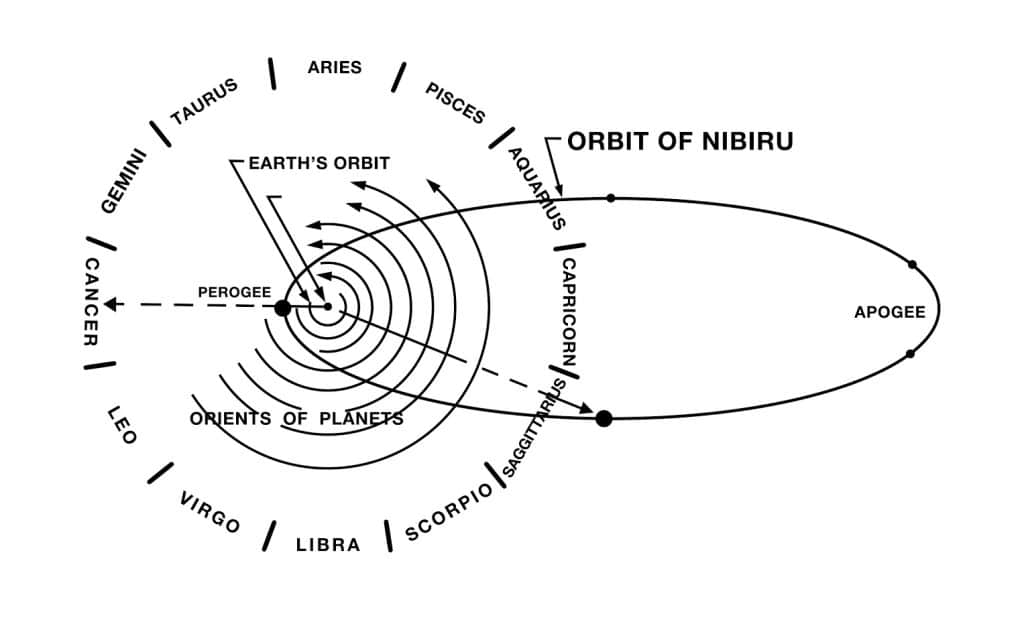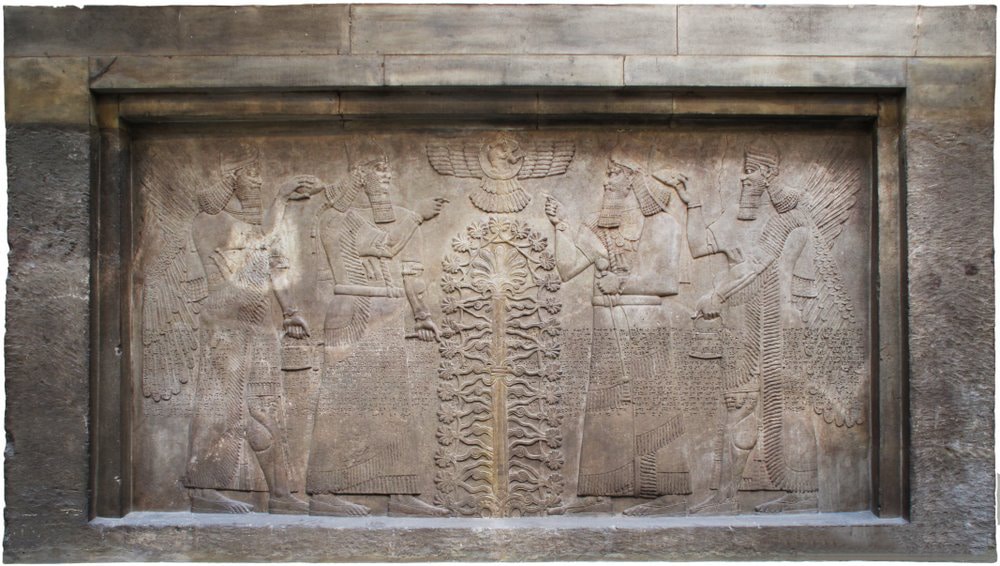
The Annunaki (Anunnaki), a group of deities from ancient Mesopotamian cultures, have fascinated historians, archaeologists, and mythologists for centuries. Originating in the Sumerian pantheon, these gods played significant roles in the religious beliefs of the Akkadians, Assyrians, and Babylonians. Known initially as descendants of An, the god of the heavens, and Ki, the earth goddess, the Anunnaki have left an indelible mark on the history and culture of these ancient civilizations.
The term “Anunnaki” comes from Sumerian and means “princely seed,” though their exact nature and functions varied across different texts and time periods.
In Mesopotamian mythology, the Anunnaki had diverse responsibilities. They were often linked to deciding human fates, and their influence extended from the heavens to earthly matters. Some texts placed them in the underworld as judges of the dead. While they included well-known gods like Enlil, Ea, and Ishtar, they were not worshipped as a group. Instead, individual deities had their own cults and temples in various cities.
Ancient Origins
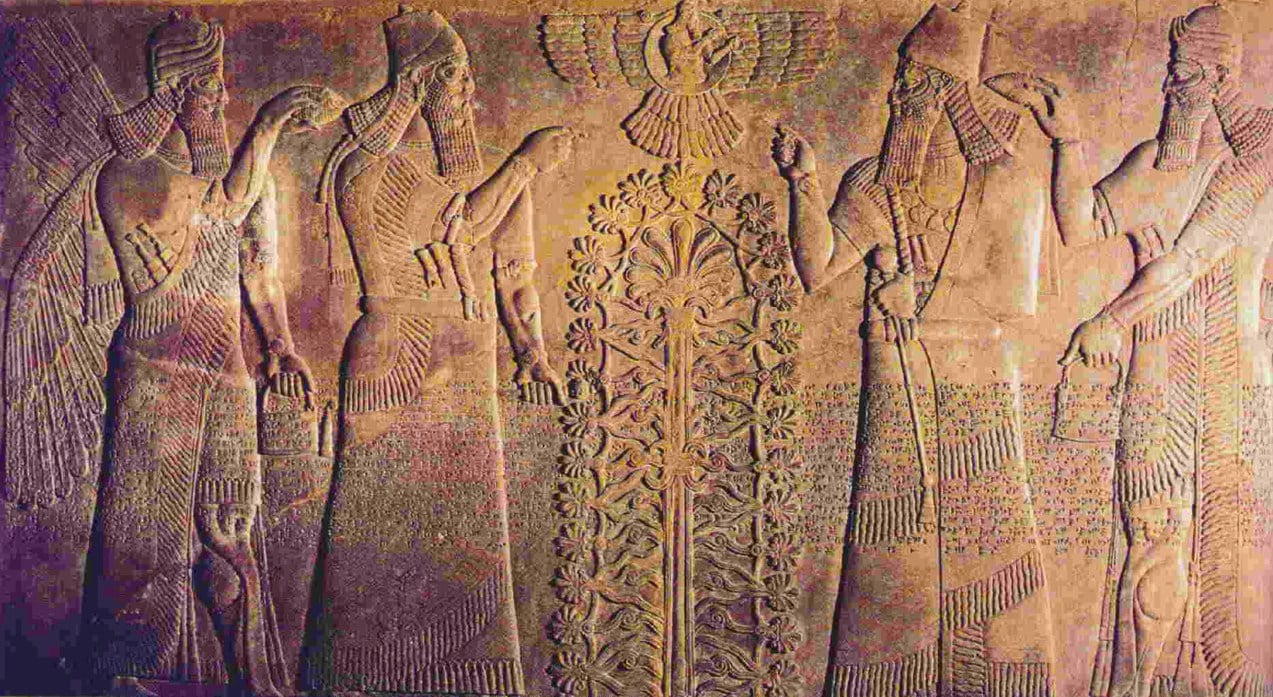
The Anunnaki appear in ancient Mesopotamian texts as a group of powerful deities. Sumerian writings from the Post-Akkadian period first mention these gods. They played key roles in Sumerian, Akkadian, Assyrian, and Babylonian myths.
Ancient texts describe the Anunnaki as:
- Descendants of An, the sky god
- Rulers of human kings and other gods
- Divided between heaven and earth
The Epic of Gilgamesh, one of humanity’s oldest written stories, talks about the Anunnaki. This epic gives us a look at how ancient people saw these gods.
In Sumerian belief, they had great power over:
- The fate of humans
- The actions of other gods
- Natural events on Earth
Sumerian texts suggest the Anunnaki came from a planet called Nibiru. Some writings claim they visited Earth long ago. These stories say the gods created humans to work for them.
The actual name “Anunnaki” comes from old Sumerian words. It means “princely offspring” or “princely blood”. This name hints at their high status in the god world.
Sumerian Mythology
They played a key part in the beliefs of ancient Mesopotamia. They were powerful gods in Sumerian, Babylonian, and Akkadian stories. People thought the Anunnaki controlled important parts of life and the world.
Some main Anunnaki gods were:
The Anunnaki lived in the heavens and underworld. People believed they made big choices about human fate. In myths, the Anunnaki:
- Created humans as workers
- Caused a great flood
- Gave kings the right to rule
Ancient texts show the Anunnaki had special powers. They could fly and do magic. Artists drew them with wings and horned hats.
Mesopotamian cultures saw the Anunnaki as divine rulers. Kings said they got their power from these gods. This helped them stay in charge. Priests did rituals to keep the Anunnaki happy.
They stayed important as Mesopotamian kingdoms changed. Their stories spread to other cultures. This helped shape religion in the ancient Near East.
People in Sumer saw the Anunnaki as very important. They built big temples to honor them. Priests would give food and gifts to these gods. This was done to keep the gods happy.
The Anunnaki influenced many parts of life in ancient Sumer:
- Government: Kings said they got their power from the gods
- Farming: People prayed to gods for good harvests
- War: Armies asked gods for help in battle
- Art: Many statues and pictures showed the Anunnaki
What Did The Anunaki Look Like?
They were often depicted with distinct physical features in Sumerian art and literature. These beings were portrayed as powerful and majestic, with several unique characteristics that set them apart from humans.
Ancient Mesopotamian deities were typically shown wearing special headgear. This often included horned caps, which symbolized their divine status. The horns were not part of their bodies, but rather elements of their ceremonial attire.
Wings were another common feature in Anunnaki depictions. These weren’t always shown as functional for flight, but rather as symbols of their celestial nature and ability to travel between the heavens and Earth.
In terms of size, they were often portrayed as much larger than humans. This emphasized their power and importance in Sumerian culture. Some artistic representations show them towering over mortal figures.
Here are some key physical attributes often associated with the Anunnaki:
- Humanoid form
- Horned headwear
- Wings or wing-like appendages
- Imposing stature
- Radiant or glowing appearance
It’s important to note that descriptions and depictions of the Anunnaki varied across different Mesopotamian cultures and time periods. Their appearance in art and literature evolved over centuries as beliefs and artistic styles changed.
Some modern interpretations have reimagined their appearance in ways that differ from ancient depictions. These range from seeing them as entirely human-like to portraying them as reptilian or extraterrestrial beings. However, these ideas are not supported by historical evidence.
As we said above, the ancient Sumerians viewed the Anunnaki as powerful forces that controlled various aspects of the world. Their appearance in art reflected this belief, often showing them with objects or animals that symbolized their specific domains of influence.
While the true nature remains a subject of debate among scholars and enthusiasts, their striking visual representations continue to capture imaginations today. These ancient images offer a glimpse into the rich mythology and belief systems of early Mesopotamian civilizations.
Ancient Astronaut Theory
Some modern interpretations, such as the Ancient Astronaut Theory, propose a different perspective on the Anunnaki’s origin.
This theory suggests that they were possibly extraterrestrial beings who visited Earth in ancient times and influenced human civilization. Advocates of this idea believe their technological advancements might have been associated with divine abilities, leading them to become revered as gods by the people of ancient Mesopotamia.
Nibiru
Another concept related to the Anunnaki is the hypothetical planet Nibiru, sometimes referred to as Planet X. Certain theories speculate that the Anunnaki originated from this undiscovered planet, which is said to have an elongated orbit around the Sun.
Although widely debated, the idea of Nibiru’s existence and its connection with the Anunnaki continues to intrigue many.
Human Civilization Influence
Were They Involved In The Creation of Humans?
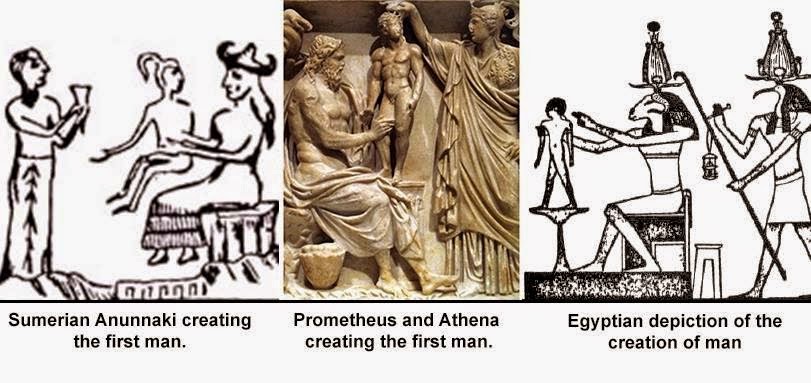
The ancient Sumerian texts provide an intriguing account of the Anunnaki’s involvement in human origins. According to the myths, they genetically engineered humans by combining their DNA with that of early hominid species in order to create a workforce. This workforce was intended to serve the Anunnaki by mining precious resources and performing various tasks.
Rule on Earth
Some believe that the Anunnaki ruled over the Earth for thousands of years. As mentioned in ancient Mesopotamian texts, these powerful beings had the ability to shape human culture and society. Possessing advanced technology and knowledge, the Anunnaki allegedly bestowed this knowledge upon humans, helping them build impressive structures and establish complex civilizations.
Their rule is believed to have extended to numerous regions, including ancient Sumer, which is considered the cradle of civilization. The Anunnaki’s impact on early human societies can be observed in various aspects such as architecture, agriculture, and the establishment of the earliest written language (cuneiform script).
Cultural Influence
The Anunnaki’s influence on human culture is evident in various mythologies of the ancient world. For instance, the Sumerian creation myths credit these beings with the establishment of the first cities, the agrarian revolution, and the implementation of social order and laws.
In Babylonian and Assyrian cultures, the Anunnaki were regarded as key members of the pantheon with each deity having their own unique abilities and roles. These deities inspired the development of religious practices, including rituals, temples, and divine iconography.
As the Anunnaki’s history spans over a great length of time, their cultural impact merged with other ancient civilizations, where their legends and beliefs became deeply intertwined with the stories of later cultures, such as the Greeks and Egyptians. Overall, the influence of the Anunnaki across the ancient world demonstrates the powerful and long-lasting impact these deities have had on human civilization throughout history.
Modern Society
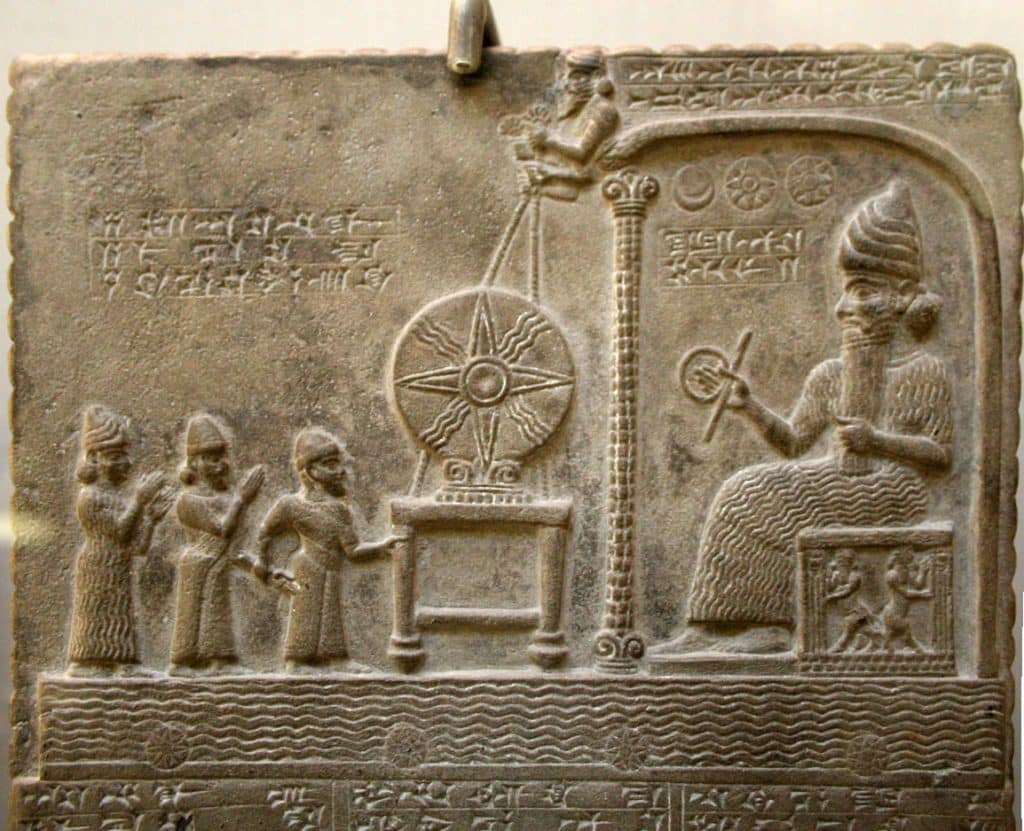
Conspiracy Theories
In recent times, the Anunnaki have become a popular subject among conspiracy theorists who believe these ancient deities may have been extraterrestrial beings. Some theories suggest that the Anunnaki originated from a hypothetical planet called Nibiru. They argue that these beings possessed advanced technology and possibly manipulated human evolution.
Although these conspiracy theories are not supported by historical or scientific evidence, they have fueled a great deal of speculation in the paranormal and alien enthusiast community. The idea that ancient civilizations had connections with advanced extraterrestrial beings has become a common theme for various alternative history hypotheses.
Some key modern ideas about the Anunnaki include:
- They were very smart beings from space
- They visited Earth thousands of years ago
- They may have helped early humans
- They might return someday
These ideas have spread to many groups. Some people believe the Anunnaki shaped human history. Others think the stories are just myths.
They have shown up in movies (Prometheus), TV shows, and books. They often appear as powerful space beings. This has made more people learn about old Sumerian stories.
Ancient astronaut theories link the Anunnaki to UFOs and aliens. These ideas mix old tales with new thoughts about space.
Some people compare Anunnaki stories to the Bible. They see links between Sumerian myths and Bible stories. This has led to new ways of looking at old texts.
Not everyone agrees with these new ideas about the Anunnaki. Many experts say the Anunnaki were just gods in old stories. They think the space alien ideas are not based on facts.
Media and Pop Culture
The fascination has also spread to media and pop culture, as they have inspired various creative works such as novels, movies, television shows, and even video games. For example, in the science fiction series “Stargate SG-1”, the Anunnaki are portrayed as a race of omnipotent beings who once ruled over the galaxy.
Books like “The Twelfth Planet” by Zecharia Sitchin and “Anunnaki: The Documentary Novel” by Joan d’Arc have fueled public interest in the subject. These works often blend legends of the ancient Sumerian gods with science fiction or alternative history narratives.
In conclusion, the Anunnaki’s presence in modern society is primarily found in conspiracy theories and pop culture. While their connection to extraterrestrial beings remains unproven, these ancient gods continue to captivate the imagination of many individuals today.
Scholarly Debates
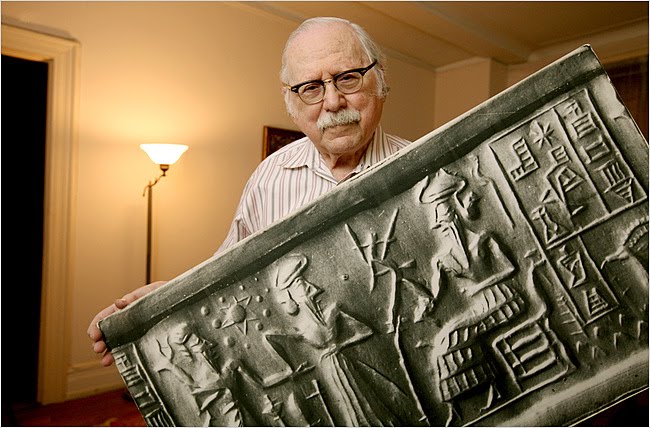
Historical Accuracy
In the field of ancient Mesopotamian studies, the Anunnaki have been a subject of interest and debate amongst scholars. The Anunnaki, also known as Anunna, Anunaki, Annunaki, or Anunnaku, are a class of gods within the ancient Mesopotamian pantheon. Their name is derived from Anu, the father of Enki and Enlil, and signifies “princely offspring.”
Some researchers argue that the Anunnaki’s origin in Sumerian culture has been misunderstood or misinterpreted, often due to the works of Zecharia Sitchin. Sitchin claimed that the Anunnaki were extraterrestrial beings who came from a planet called Nibiru. However, many scholars consider his theories to be fringe and not based on concrete evidence.
Archaeological Evidence
Archaeological findings have provided some insights into the Anunnaki’s role in ancient Mesopotamian society. Various artifacts, such as statues and inscriptions, depict the Anunnaki as important deities in the Sumerian pantheon. Nevertheless, there remains a lack of substantial physical evidence to wholly support or discredit the more speculative theories surrounding these ancient gods.
Some scholars argue that the Anunnaki were simply deities worshiped by the Sumerians, while others believe that their significance may have been exaggerated and needs to be reevaluated. For instance, there are debates regarding the extent to which the Anunnaki influenced the development of human civilization and the role(s) they played in the rise and fall of ancient Mesopotamian empires.
In conclusion, the scholarly debate on the Anunnaki and their role in ancient Mesopotamian society remains ongoing, with varying opinions and interpretations. Further research and archaeological discoveries may eventually shed more light on these intriguing ancient gods and their place in human history.
Final Thoughts
The Anunnaki have intrigued scholars and enthusiasts for centuries. Their significance in the Sumerian culture has been a topic of interest since the 19th century, primarily due to their connection with the creation myths and the possible influence on other cultures’ pantheons.
Although there has been limited evidence supporting the existence of a specific cult dedicated to these gods, their impact on the historical and religious aspects of ancient civilizations is undeniable. Some theories suggest that the Anunnaki might be connected to the fall of certain spiritual beings called the Nephilim, as mentioned in the Book of Enoch.
One interpretation of the Anunnaki’s role in human history is offered by Zechariah Sitchin, who proposes that history occurs in cyclical patterns, with the Anunnaki possibly playing a significant role in the initiation of new cycles in human development. However, this remains a speculative assertion without sufficient evidence to support it.
In closing, the Anunnaki continue to captivate the imagination of both researchers and the general public. While there is still much to be discovered about their exact role and impact on ancient civilizations, their presence in the Mesopotamian pantheon serves as a fascinating element of our collective human history. As further research continues to unravel their mysteries, our understanding of the Anunnaki’s place in the grand tapestry of ancient civilizations will undoubtedly expand.
Frequently Asked Questions
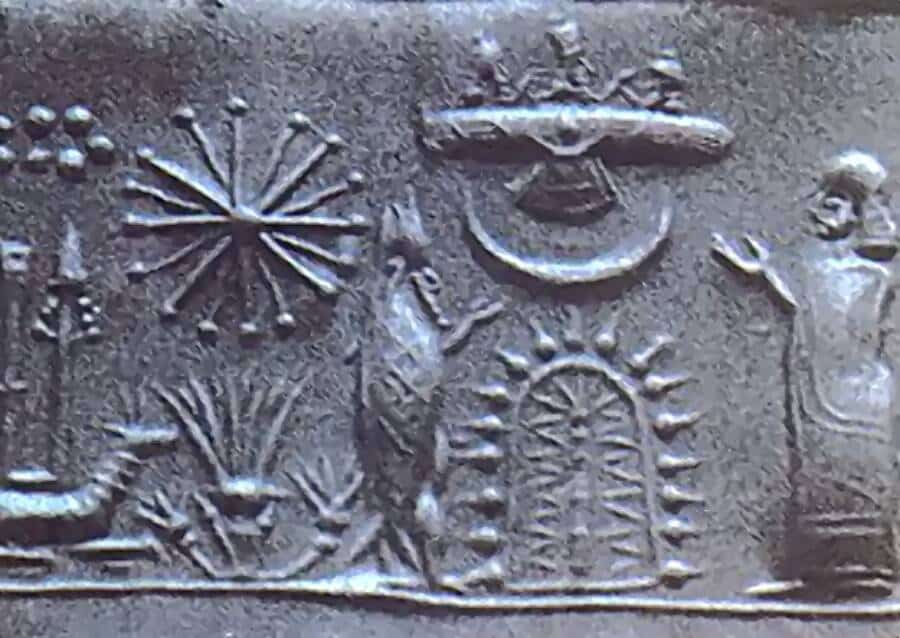
What is the origin of the Anunnaki mythology?
The Anunnaki mythology originates from the ancient Sumerians, who were one of the earliest civilizations in human history. They were a group of deities within the Mesopotamian pantheon and were worshipped by the Sumerians, Akkadians, Assyrians, and Babylonians. The term can be roughly translated as “princely seed” in Sumerian, refers to a class of gods who were descendants of the deities An and Ki.
How have they influenced human history?
The Anunnaki were believed to have played a significant role in the development of early human societies, as they were considered the guiding forces behind many aspects of life, including agriculture, laws, and the values that shaped these ancient cultures. The impact of the Anunnaki is evident in the various mythological accounts and religious practices of the Mesopotamian civilizations, which continue to influence modern culture and thought.
What are the main deities?
While the number of gods and their specific names and roles varied in different historical texts due to limited recoverable information, some key figures include Anu, the god of heaven; Enlil, the god of wind and earth; and Enki, the god of water and wisdom. These deities often had complex relationships with each other and held great power and influence over different aspects of life in the ancient world.
Which ancient cultures referenced?
They were worshipped and referenced by many ancient Mesopotamian cultures, including the Sumerians, Akkadians, Assyrians, and Babylonians. Each of these cultures had their own interpretations and stories about the Anunnaki’s role in their societies, shaping their religious practices and understanding of the gods’ influence on human life.
How are they described in ancient texts?
The descriptions in ancient texts vary widely due to the scarcity of recoverable sources and the diverse perspectives of the various Mesopotamian cultures. Generally, the Anunnaki are depicted as powerful and often unpredictable gods, capable of both benevolence and destruction. They were considered responsible for maintaining balance between the earthly and divine realms, as well as holding authority over various aspects of human existence.
What is the significance in modern culture?
In modern culture, they have inspired various theories, interpretations, and speculations regarding their impact on human history and their potential connection to extraterrestrial life. They have become a subject of fascination in popular culture, often appearing in books, movies, and other forms of media that explore themes of ancient astronauts, supernatural powers, and the potential influence of the gods on human civilization. The Anunnaki mythology continues to captivate the imagination of many, serving as a reminder of the rich and complex history of human belief systems.

